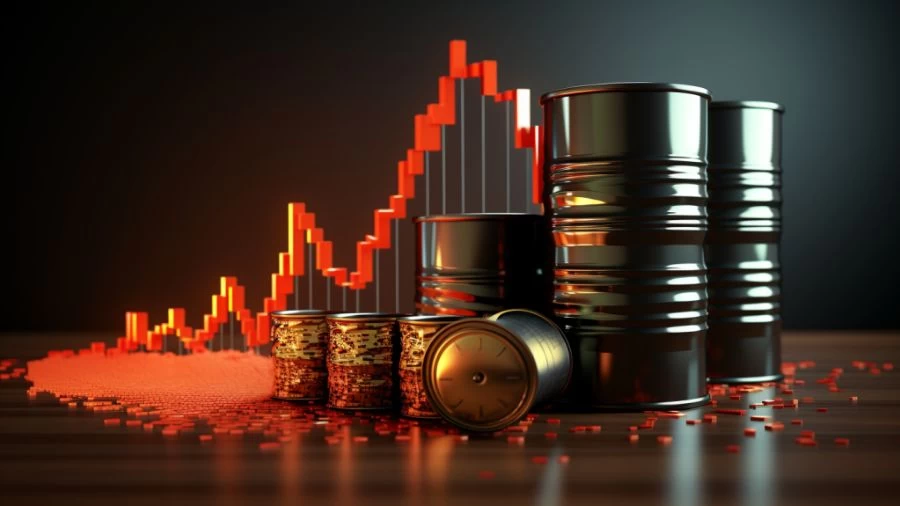
Why Have Oil Prices Gone Up to Almost $100 per Barrel?
Oil prices have surged to nearly $100 per barrel due to a combination of factors which include voluntary supply cuts by certain OPEC+ members, additional production reductions by Saudi Arabia and Russia, and uncertainties in the global economic landscape.
Published Sep 30, 2023 | Updated Sep 30, 2023 | 📖 3 min read
Why Have Oil Prices Gone Up to Almost $100 per Barrel?
Oil prices surging to nearly $100 per barrel have grabbed headlines and sparked discussions about the driving forces behind this significant increase. This surge in oil prices, while impactful, is not without its complexities and potential consequences. In this detailed exploration, we'll dissect the factors contributing to this rise and assess the implications.
At the core of the oil price surge are voluntary production cuts orchestrated by select members of OPEC+ which is a coalition of oil-producing countries. Notably, Saudi Arabia and Russia have joined forces in reducing production and exports. These measures have effectively curtailed the global supply of oil, leading to a surge in prices. However, market analysts remain cautious about the long-term sustainability of this upward trend, primarily due to ongoing economic uncertainties on the global stage.
What Causes Oil Shortages Globally?
One might assume that skyrocketing oil prices would force buyers to scale back their refinery output. Surprisingly, this hasn't been the case, thanks to something called "Favorable Refining Margins." This concept refers to the profitability of refining crude oil into various petroleum products.
In the current scenario, the value of these refined products remains considerably higher than the cost of the crude oil used to produce them. As a result, local buyers, including refineries, have managed to weather the storm of triple-digit oil prices without experiencing significant disruptions to their operations.
The situation becomes more intricate when we consider global diesel shortages and uncertainties in the market. Questions linger regarding China's fuel export quotas, and Russia's embargo on fuel exports, driven by international sanctions, has tightened the availability of refined products.
The risk of worsening global diesel shortages is a real concern. Furthermore, historical data shows that unforeseen events, such as the hurricane season, can disrupt local refining and crude production, creating additional market uncertainties.
What is the Role of the U.S in Rising Oil Price?
While the current bullish trend in oil prices is undeniable, skepticism looms over the long-term sustainability, especially if prices breach the $110 per barrel threshold. This skepticism is tied to the concept of "demand destruction." In essence, persistently high oil prices can prompt consumers to reduce their oil-related purchases. This reduction in demand can have far-reaching economic repercussions.
The United States has not been silent amid the rising oil prices. The U.S. government has urged OPEC+ producers to increase their oil output in a bid to mitigate soaring fuel costs and combat inflation. However, it's worth noting that the U.S. response to the recent production cuts has been relatively restrained. The delicate diplomatic balancing act involves maintaining relationships with key Middle Eastern allies, such as Saudi Arabia, while addressing pressing energy-related concerns.
Explore the intricate web of Economy with MarketsHost, where you can access valuable information on credit cards, insurance, and banking.
Multifaceted Factors Behind the Surge in Oil Prices
The surge in oil prices to nearly $100 per barrel is a multifaceted phenomenon shaped by supply cuts, favorable refining margins, and global uncertainties. While some experts believe that high prices may persist for a while, there is a palpable concern about potential demand reduction and the intricate web of diplomacy influencing the resolution of these complex energy-related issues.
It's essential to emphasize that the dynamics of the oil market are subject to rapid changes, and various geopolitical and economic factors can influence the trajectory of oil prices in the coming months. As such, staying informed about these developments is crucial for both industry experts and the general public.
Why Have Oil Prices Gone Up to Almost $100 per Barrel - FAQs
1. Why are oil prices approaching $100 per barrel?
Oil prices near $100 per barrel are the result of supply cuts and uncertainties in the global economy.
2. What role do supply cuts play in rising oil prices?
Supply cuts by OPEC+ members and pledges from Saudi Arabia and Russia contribute to price support.
3. Are there concerns about global diesel shortages?
Uncertainty in China's fuel export quotas and Russia's fuel export ban have tightened the availability of refined products.
4. What is potential demand destruction in the context of rising oil prices?
There are concerns that persistently high oil prices, especially if they reach $110 per barrel, may lead to reduced consumer demand.




